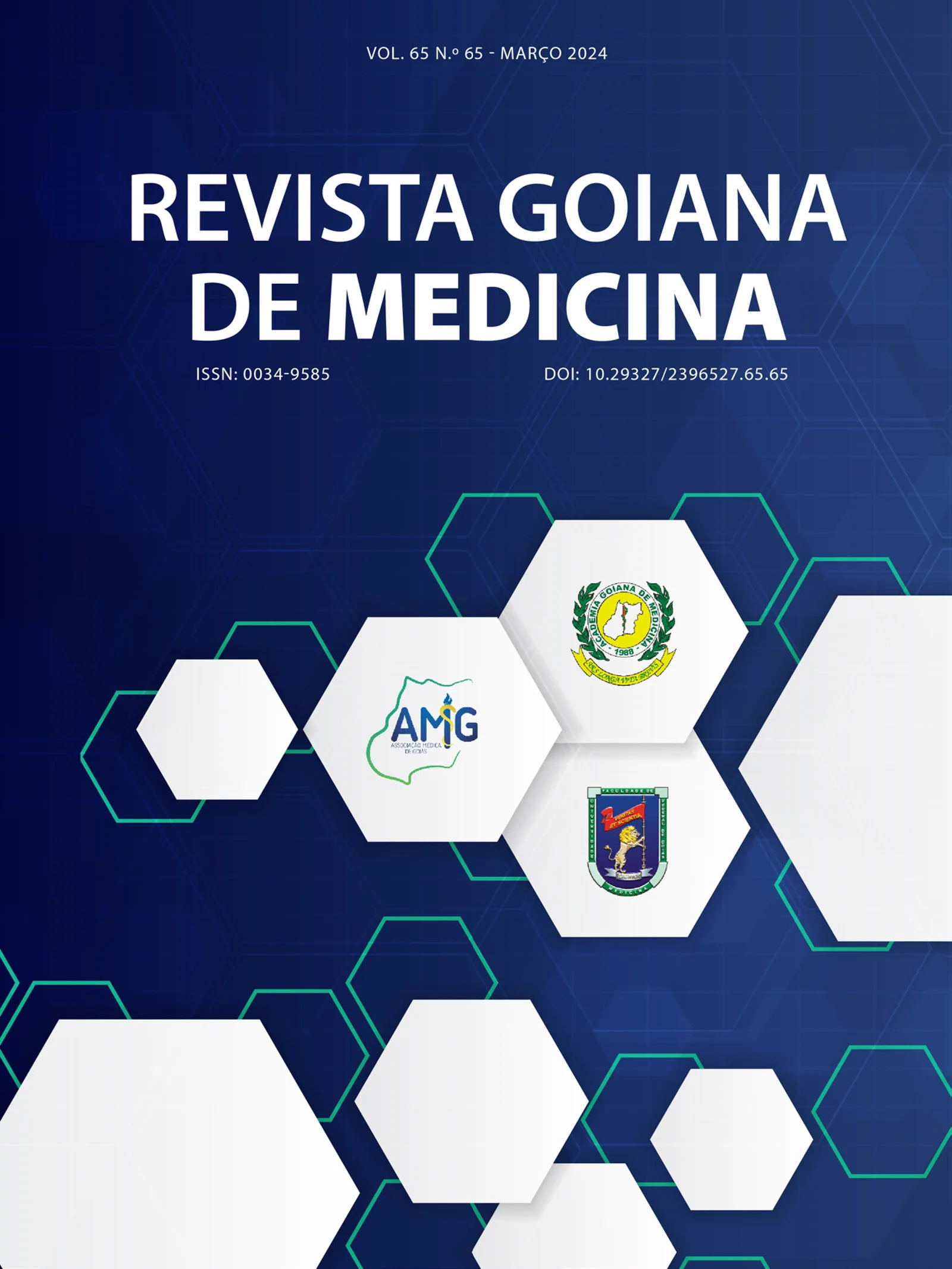Anestesia e inteligência artificial
onde estamos e para onde vamos?
DOI:
https://doi.org/10.29327/2396527.65.65-9Palabras clave:
Anestesia, Inteligência Artificial, Aprendizado de Máquina, Aprendizado ProfundoResumen
A tecnologia baseada em Inteligência Artificial e seus subcampos como Machine Learning e Deep Learning aplicados à área da saúde encontram-se em rápida evolução. Na especialidade da anestesiologia as suas aplicações podem ser observadas nas áreas de avaliação pré-operatória, monitorização da profundidade anestésica e administração automatizada de fármacos, anestesia regional guiada por ultrassom e gestão de salas cirúrgicas com resultados promissores.
Objetivo: O objetivo desta revisão narrativa de literatura é conhecer em qual cenário tecnológico a anestesiologia se encontra e quais as perspectivas futuras, compreender os resultados, as barreiras e os desafios.
Metodologia: Esse estudo consiste em uma revisão de literatura, com pesquisas por meio de análises de artigos na plataforma PubMed, entre os anos 2010 a 2023, aplicando-se os termos: Anesthesiology, Artificial Intelligence, Machine Learning e Deep Learning.
Resultados: Foram identificados 65 artigos relacionados aos termos pesquisados, dos quais, 25 artigos foram selecionados. Após a exclusão de 03 artigos por fuga do tema, 22 artigos eram elegíveis e 15 artigos foram selecionados para o presente estudo.
Conclusão: A Inteligência Artificial e seus subcampos estão em progressiva expansão de desenvolvimento. Com a capacidade de criar algoritmos que executam tarefas e solucionam problemas de forma semelhante à inteligência humana estão presentes em diversas áreas da anestesiologia. Auxiliam os especialistas a entregarem qualidade, segurança e eficiência dos cuidados prestados, no entanto, barreiras éticas, morais e sociais devem ser superadas. Apesar de apresentar resultados promissores, estudos futuros quanto às suas aplicabilidades devem ser realizados e a presença do médico anestesiologista ainda é indispensável na prática clínica.
Referencias
Song B, Zhou M, Zhu J.Necessity and importance of developing AI in anesthesia from the perspective of clinical safety and information security . Med Sci Monit. 2023; 29:e938835. Available from: https://medscimonit.com/abstract/full/idArt/938835 doi: 10.12659/MSM.938835
Singhal M, Gupta L, Hirani K (September 11, 2023). A comprehensive analysis and review of artificial intelligence in anesthesia. Cureus. 2023 Sep 11;15(9):e45038. Available from: https://doi.org/10.7759/cureus.45038 doi: 10.7759/cureus.45038
Hashimoto DA, Witkowski E, Gao L, Meireles O, Rosman G. Artificial intelligence in anesthesiology: current techniques, clinical applications, and limitations. Anesthesiology. 2020 Feb;132(2):379–94. Available from: https://doi.org/10.1097/ALN.0000000000002960 doi: 10.1097/ ALN.0000000000002960
Grath MH, Flanagan C, Zeng L, Lei Y. Anaesthesia monitoring using artificial intelligence techniques. Int J Anesth. 2019;6(4):098. https://doi. org/10.23937/2377-4630/1410098 doi: 10.23937/2377-4630/1410098
Bellini V, Valente M, Gaddi AV, Pelosi P, Bignami E. Artificial intelligence and telemedicine in anesthesia: potential and problems. Minerva Anestesiol. 2022 Sep;88(9):729-34. Available from: https://doi.org/10.23736/S0375-9393.21.16241-8 doi: 10.23736/S0375-9393.21.16241-8
Wong DT, Kamming D, Salenieks ME, Go K, Kohm C, Chung F. Preadmission anesthesia consultation using telemedicine technology: a pilot study. Anesthesiology. 2004 Jun; 100(6):1605-7. Available from: https://doi.org/10.1097/00000542-200406000-00038 doi: 10.1097/00000542- 200406000-00038
Fishman M, Mirante B, Dai F, Kurup V. Patient preferences on telemedicine for preanesthesia evaluation. Can J Anesth. 2015;62:433-4. Available from: https://doi.org/10.1007/s12630-014-0280-0 doi: 10.1007/s12630-014-0280-0
Sha SB. McSleepy, da Vinci, Kepler Intubation System et al. Indian J Anaesth. 2013 Jan-Feb;57(1):101-2. Available from: https://doi. org/10.4103/0019-5049.108597 doi: 10.4103/0019-5049.108597
Seger C, Cannesson M. Recent advances in the technology of anesthesia. 2020 May 18, 9:1-7. [version 1; peer review: 2 approved] Available from: https://doi.org/10.12688/f1000research.24059.1 doi: 10.12688/f1000research.24059.1
Naaz S, Asghar A. Artificial intelligence, nano-technology and genomic medicine: the future of anaesthesia. J Anaesthesiol Clin Pharmacol. 2022 Jan 28;38(1):11-7. Available from: https://doi.org/10.4103/joacp.JOACP_139_20 doi: 10.4103/joacp.JOACP_139_20
Shalbaf R, Behnam H, Sleigh JW, Steyn-Ross A, Voss LJ. Monitoring the depth of anesthesia using entropy features and an artificial neural network. J Neurosci Methods. 2013 Aug 15;218(1):17-24. Available from: https://doi.org/10.1016/j.jneumeth.2013.03.008 doi: 10.1016/j.jneumeth.2013.03.008
Viderman D, Dossov M, Seitenov S, Lee M-H. Artificial intelligence in ultrasound-guided regional anesthesia: a scoping review. Front Med. 2022 Oct 25; 9:994805. Available from: https://doi.org/10.3389/fmed.2022.994805 doi: 10.3389/fmed.2022.994805
Karmakar A, Khan MJ, Abdul-Rahman M, Shahid U. The advances and utility of artificial intelligence and robotics in regional anesthesia: an overview of recent developments. Cureus. 2023 Aug 29;15(8): e44306. Available from: https://doi.org/10.7759/cureus.44306 doi: 10.7759/ cureus.44306
Chan JJI, Ma J, Leng Y, Tan KK, Tan CW, Sultana R, at. al. Machine learning approach to needle insertion site identifcation for spinal anesthesia in obese patients. BMC Anesthesiol. 2021 Oct 18;21(246):1-8. Available from: https://doi.org/10.1186/s12871-021-01466-8 doi: 10.1186/ s12871-021-01466-8
Liu Y, Cheng L. Ultrasound images guided under deep learning in the anesthesia effect of the regional nerve block on scapular fracture surgery. J Healthc Eng. 2021 Oct 07;2021: 6231116. Available from: https://doi.org/10.1155/2021/6231116 doi: 10.1155/2021/6231116
Belline V, Guzzon M, Bigliardi B, Mordonini M, Filippelli S, Bignami E. Artificial intelligence: a new tool in operating room management. role of machine learning models in operating room optimization. J Med Syst. 2019 Dec 10;44(20). Available from: https://doi.org/10.1007/s10916- 019-1512-1 doi: 10.1007/s10916-019-1512-1
Descargas
Publicado
Número
Sección
Licencia
Derechos de autor 2024 Revista Goiana de Medicina

Esta obra está bajo una licencia internacional Creative Commons Atribución 4.0.


